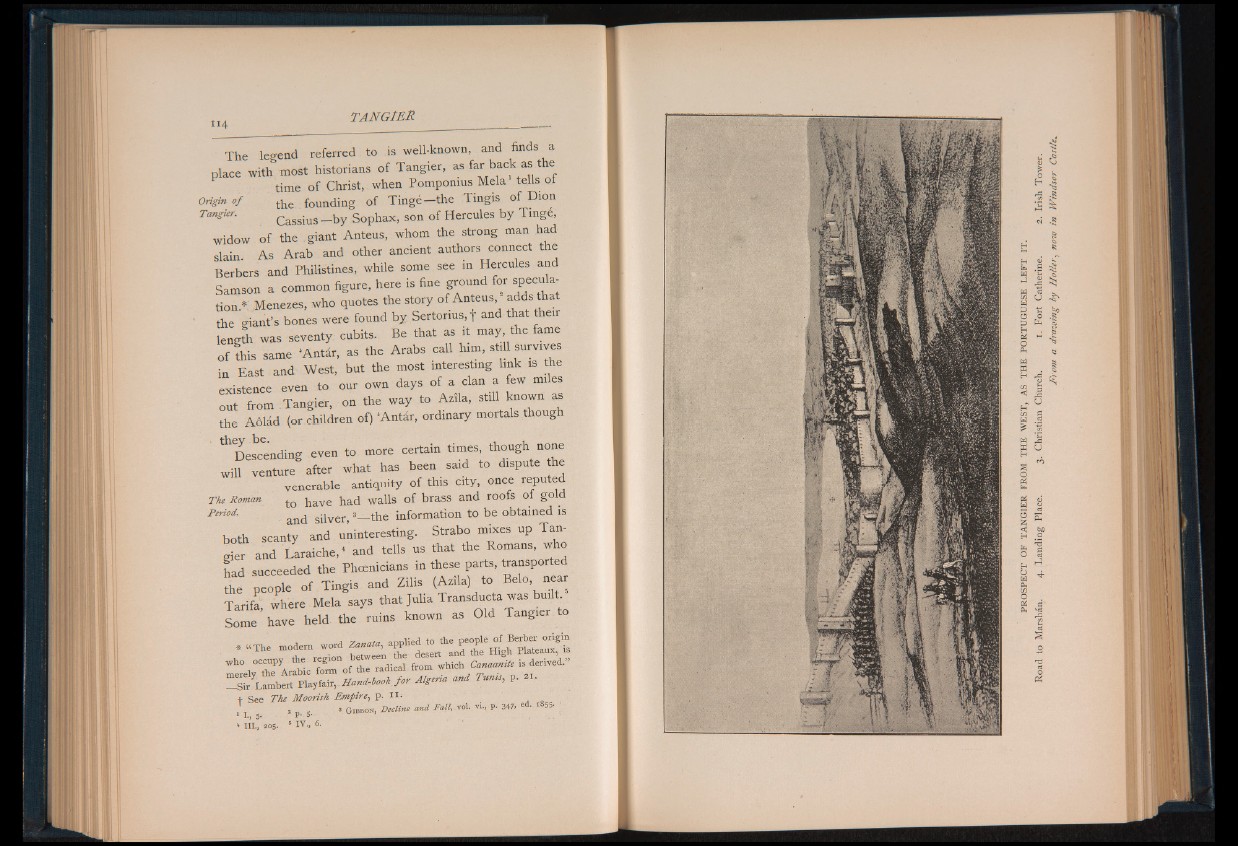
The legend r e f e r r e d to is well-known, and finds a
place with most historians o f Tangier, as far back as the
time o f Christ, when Pomponius Mela tells of
Origin o f the founding of Tinge the Tingis of Dion
Tangier. Cassius _ b y Sophax, son of Hercules by Tinge,
widow o f the giant Anteus, whom the strong man had
slain. A s A rab and other ancient authors connect the
Berbers and Philistines, while some see in Hercules and
Samson a common figure, here is fine ground for speculation
.* Menezes, who quotes the story o f Anteus, “ adds that
the giant’s bones were found b y Sertorius,t and that their
length was seventy cubits. Be that as it may the fame
o f this same *Antar, as the Arab s call him, still survives
in Ea st and West, but the most interesting link is the
existence even to our own days o f a d a n _a few miles
out from Tangier, on the way to Azila, still known a^
the A o lad (or children of) ‘Antar, ordinary mortals though
^Descending even to more certain times, though none
Will venture after what has been said to dispute the
venerable antiquity of this city, once reputed
The Roman to have bad walls of brass and roofs of gold
Period. ^ silver,3— the information to be obtained is
both scanty and uninteresting. Strabo mixes up Tangier
and Larai W and tells us that the Romans, who
had succeeded the Phoenicians in these parts, transported
the people o f Tingis and Zilis (Azila) to B e K near
Tarifa where Mela says that Julia Transducta was bu .
S ^ e ’ have held the ruins known as Old Tangter to
W>1° 1,“ h f i r l 'i c t a T r f « • “ d ta a B K 9
t See The Moorish Empire, p. i i ; . •
i I S 1 P* 5* 3 G i b b o n , Decline and F a llyNol. vi., p. 347> e • 1 *
4 III., 205. 5 IV., 6.